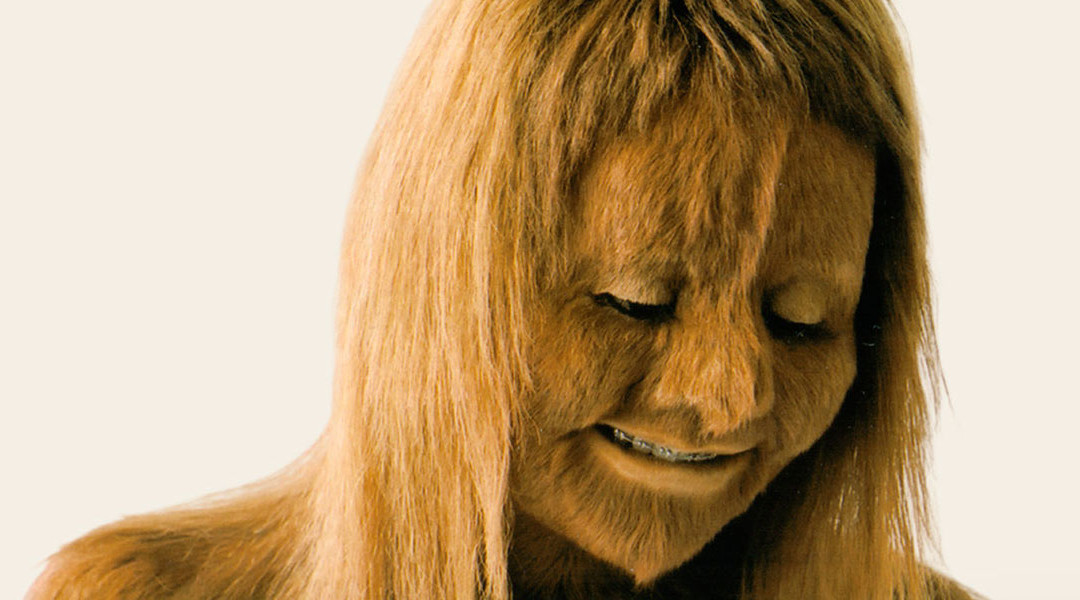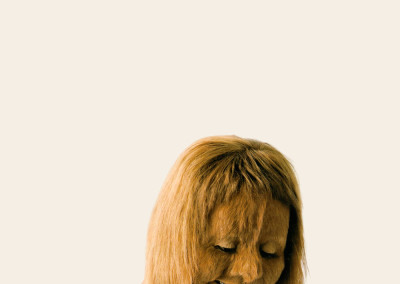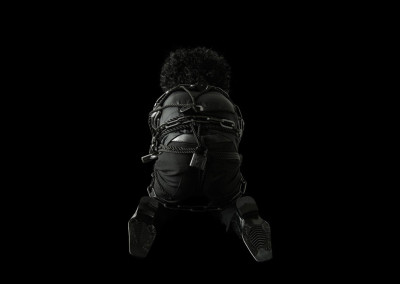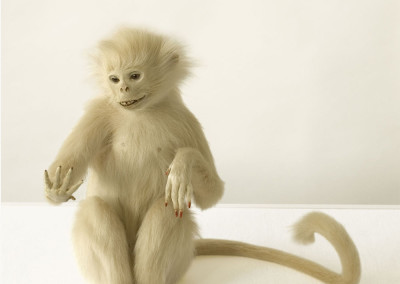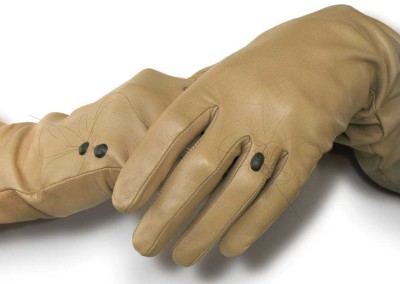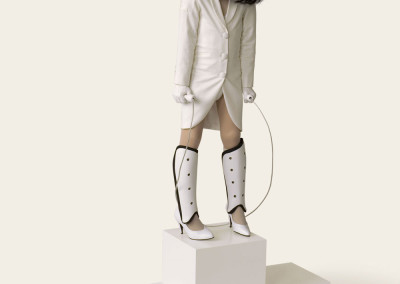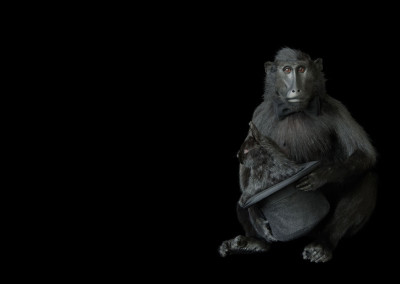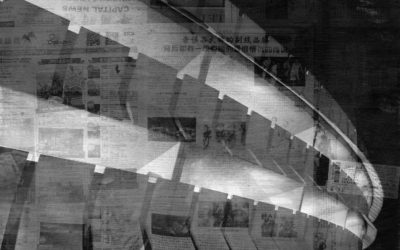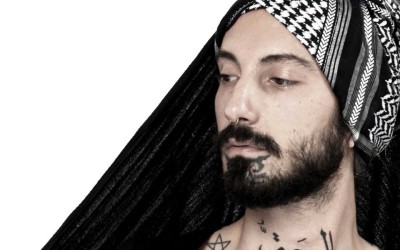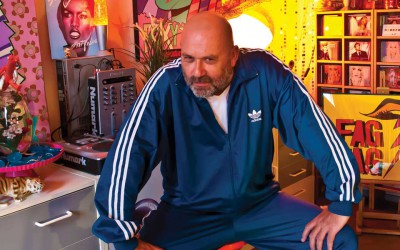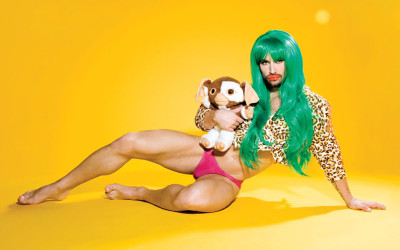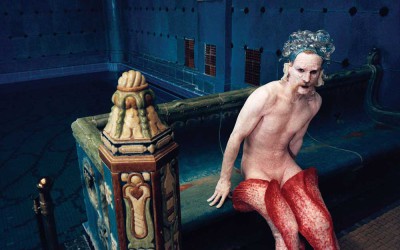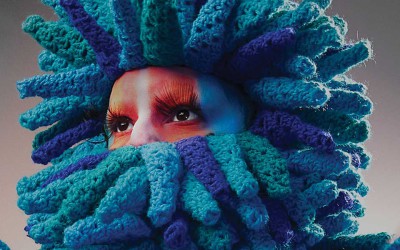Silvia B.
Text JF. Pierets Photos & artwork Silvia B.
She affectionately calls them ‘my boys’, when she talks about her statues. A black and a white series of puppets that almost seem to come alive and that are created with a level of perfection that can only be understood as love. Some of them, with names like Thinker, Ira Jr., Lord Rangda or Mors, are part of the series ‘Les plus Beaux’, the most beautiful of them all. And that is what they are, strangely hovering between man and animal, transcending standard notions of beauty. In conversation with a most versatile and intriguing artist, Silvia B.
All your statues are hybrids, age- and genderless yet existing in some perfect illusion. Highly attractive at first glance but disturbing at a closer look.
I like to make my sculptures as beautiful as possible and I love them to be fluid. They are based on signs of our time. Stereotypes taken to the max. Not only regarding androgyny but also of genetic manipulation, cosmetic surgery. In this day and age you can become whomever you want to be or rather: whomever you have to be in order to fit in.I try to make my sculptures as beautiful as I can, just to arouse the viewers’ sense of duality. Attract them with craftsmanship but unsettle them on second look. Magnetism versus rejection. Not to mention doubt. I like the audience to be in doubt before they judge: that it’s not possible for them to instantly take a stand. For me it is important that you have to think about whether these creatures are beautiful or not and subsequently whether they are good or bad. Doubt is the basis of all thought and I like to advance that as a given. It is my vision on beauty; a kind of beauty that isn’t appreciated most of the time because there is always a dark side to it. Like film stills: you never know what is going to happen next.
Your representations challenge not only our conceptions of normality in regard to beauty but also in respect of human behaviour.
I have always been interested in human behaviour. We are still so very instinctive, aren’t we? Everything we do is based on our desires and our fears. When you see someone on the street who looks a bit different you instantly decide, within three seconds, whether you are going to make eye contact or not. Is the other person a winner or a loser? Do I want to connect or could that be dangerous? We still behave like herd animals and at the same time we think of ourselves as being some kind of super-beings.
Super-beings with the possibility to explore genetic manipulation, cosmetic surgery, artificial intelligence. Is that why you made ‘Almost Perfect’?
This girl was sitting in my atelier for quite a long time. I found her while strolling around a flea marked. She was so weird: an old doll, an anorexic avant la lettre. I knew there was a statue inside of her but I wasn’t quite sure where she was going. She was my skinny teenager who didn’t know whether to fall in love with boys or with girls. I gave her all the opportunities an era of the makeable human has to offer; the endless growing possibilities of plastic surgery. Her skin is stitched together and I gave her fashionably oversized lips. She is self-conscious of her pubescent breasts and tiny penis. I offered her a choice to grow into whomever she wanted to be.
And all of a sudden everything went black.
Once again I was drifting on the tide of time. Business was going well but all of a sudden the crisis kicked in. People bought less art; they were more careful with their money and I had to jump into a new future without a parachute. That was quite confronting. My white series exists very much in the ‘here and now’. Little boys, decadent and aggressive yet charming and confident regarding their place in time.The black series, starting with ‘Les Bêtes Noires’, is different: more introvert, more me maybe. Most of them have their eyes closed. Not only to give the viewer the freedom to stare but also to express an aloofness that borders denial. I wanted to give them the possibility to shut out the rest of the world. To be self-assured and in no need of approval.
You seem to have a huge fascination for the circus.
My father always told me that they found me at the queue of a Russian parade. You are so weird, he said, you can’t be our child. So I kept on hoping the Tsar and Tsarina would come to get me and take me far away from these ordinary people. So who knows: maybe that is where this interest came from? I love the comical yet theatrical effect of the circus. Don’t you think it is strange that we find it funny when people behave like animals and vice versa? We buy tickets and laugh at people who look displaced. And isn’t it weird that we decorate our homes and ourselves with – literally – someone else’s feathers. It is quite morbid to take pleasure in the remains of dead animals. We think that we are some kind of superhuman beings, that everything is there because of us. We use all species except our own – well, exceptions left aside.
‘The gloves are ‘marked’ with what some people might call imperfections: freckles, scars, hairy moles or even a mutant-like extra thumb. Are they dissonances or signs of beauty?’
Children that are covered head-to-toe in hair are a constant factor in your work.
Since time immemorial, extremely hairy people have been exhibited in traveling circuses so this inevitably lead to ‘Le Cirque’. A melancholic series of both children in fur and animals behaving like people. The atmosphere of those fancy fairs and the dubiously voluntary aspect of those shows made me choose to create them all in black. Fit for an environment where certain activities might not be suited to be exposed in broad daylight. The fact that everything is black forces you to concentrate on what you see, which strengthens the aspect of voyeurism.
You are not only displaying your work, but people can actually wear it. Your Skinover elbow length gloves offer the possibility to brave the day in someone else’s skin.
When I started to create ‘Almost Perfect’, I first made her hands and I was trying them on myself, feeling the touch of the lambskin leather. Afterwards I couldn’t forget the sensation of living in someone else’s skin, as if I were actually wearing her. So that is where it all started. And since I like to question our current concept of aesthetics, I involved someone else’s tattoos, someone else’s birth marks, scars: to explore the edge between what is beautiful and what is not. The gloves are ‘marked’ with what some people might call imperfections: freckles, scars, hairy moles or even a mutant-like extra thumb. Are they dissonances or signs of beauty? Is everything that deviates from the norm a priori bad, strange? A brown spot on the face of a young woman is called a beauty mark; on the face of an old lady it is considered a shrew’s wart. Understanding this makes mainstream thoughts regarding beauty very relative.
Your work is closely related to fashion.
I love fashion because it is the only art form able to react very quickly on what is happening in the world. Design, art and architecture for example, are much slower in their reflection. Fashion shows the way we are feeling in regard to politics or social issues. I was 18 years old when punk made its entrance and at the time, there weren’t any punk clothes or jewellery available here in The Netherlands; I had to make everything myself. I found them to be very creative and productive times. The ideas of no tomorrow, no future, party every day and wear your most beautiful clothes, were very inspiring. Since there was no future you had to do everything Now: tomorrow might be too late. In a way it is what I am still doing. Customizing things, bringing all those dolls to my atelier to check if there are statues hidden inside. I still play with dolls, only now I get paid to do so.
Inspiration is lifestyle?
Yes. Magazines, movies, human behaviour, how we succeed in society: all very inspirational but quite complicated. Life itself is quite complicated so I like it if certain things stay the same. For example, 20 years ago I chose to have this hairdo and I am not going to change it anymore. I like to wear black, it feels comfortable, I am not going to change it anymore. If I have to make decisions about everything, I wouldn’t be able to work so I make it simple. I choose to keep it simple.
Leaves me nothing but to ask about your future plans. We have seen white, we have seen black. What else can we expect from a very versatile artist who wants to keep life simple?
The future looks very exciting! I am heading towards a solo exhibition and I don’t have a clue what I am going to show. I want to make new work; start all over again. Long live the internet where I can check images from all over the world without leaving the comfort of my atelier. I’ll keep you posted!
Related articles
Faryda Moumouh
Since I was young I was already drawing, watching, registering details from the things I saw. It was an urge and I had the feeling I was chosen by a visual language, which I pursued. I went to art school when I was 14 and it made me discover…..
Bubi Canal
Surrealism meets objet trouvé, meets performance art and photography. The art of Bubi Canal includes many disciplines, yet its common thread is the ability to make you happy. His work is positive, colorful and carries you along into this magical…..
Tareq Sayid de Montfort
Like all the monotheistic religions, at its birth, Islam was an avant-garde movement, in this instance of medieval Arabia. During its Golden Age, the Islamic world was avant-garde in comparison to Europe and also in the arts during the brief…..
Peter Popart
Wham!, Boom! and Pow! Pop art is alive and happening and living in Rotterdam. Living amongst posters of Divine, plastic flowers and with a soft spot for John Waters. We talk to painter Peter Popart Radder in his gorgeous house filled with…..
Lukas Beyeler
We’ve met Lukas Beyeler on Facebook and were instantly touched by both his pictures as his intriguing video work. Lukas is working, amongst others, for Bernard Willhelm and Bruce Labruce and is photographing both famous faces like Pharrell…..
Michael James O’Brien
When talking to some friends in Antwerp, the name Michael James O’Brien was often mentioned. One couple bought a series of his pictures, another met him in a bar in Antwerp. When searching his name online, one can only produce a shriek of…..
Anto Christ
Her calling card in life is to explore and to experiment with different mediums in order to create something new. Creating is her obsession and passion and she refuses to put herself in a bubble by sticking to one thing only. Next to being a designer…..
Little People
UK based artist Slinkachu is abandoning little people on the streets since 2006. Come again? “My ‘Little People Project’ started in 2006. It involves the remodelling and painting of miniature model train set characters, which I then place…..
